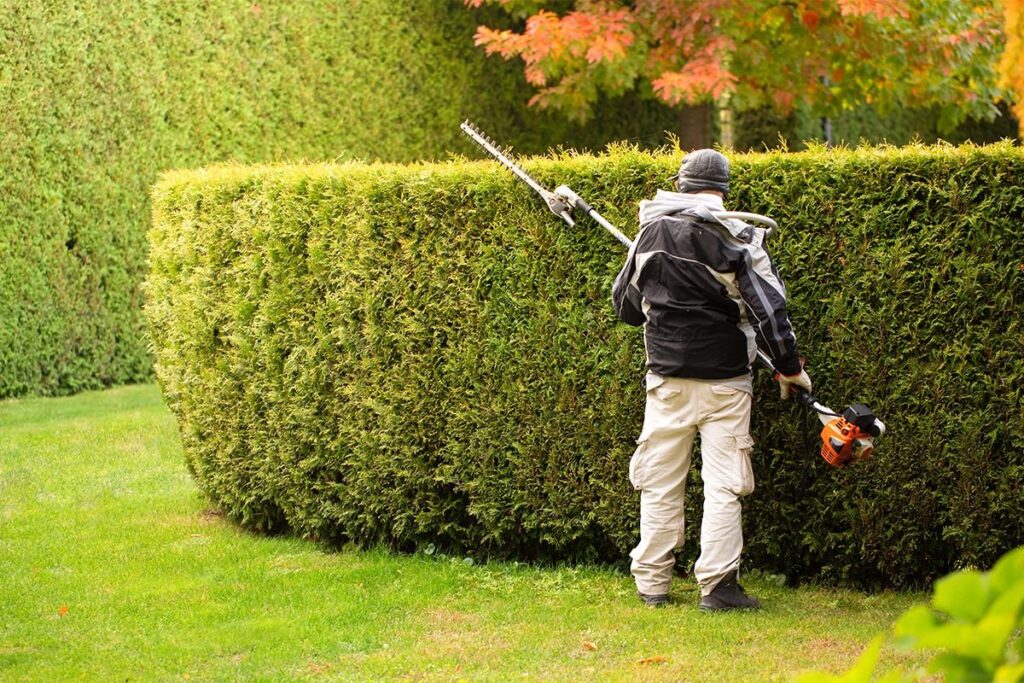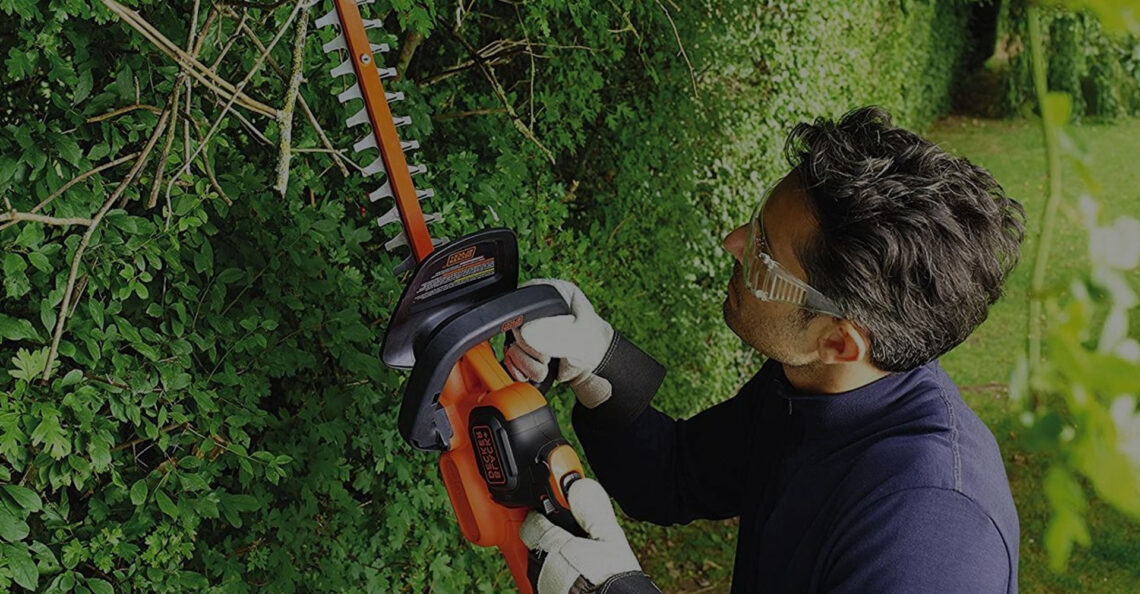Hedge shaping is an essential aspect of maintaining the overall appearance and health of your garden or landscape. When done correctly, it can add a touch of elegance and sophistication to any outdoor space. In this article, we will explore the secrets to achieving the perfect look when it comes to hedge shaping.
Understanding the Basics of Hedge Shaping
Before diving into the benefits of professional hedge trimming, it is important to grasp the fundamental principles behind it. Hedge shaping refers to the process of trimming and pruning hedges to achieve a desired shape. The primary goals of hedge shaping are to maintain the health of the hedge, enhance its appearance, and keep it neat and well-manicured.
The Importance of Hedge Shaping
Proper hedge shaping has a myriad of benefits. First and foremost, it helps to define the boundaries of your property, offering both privacy and security. A well-shaped hedge trimming can also create a sense of enclosure and tranquility, serving as a framework for other elements in your garden.
Imagine walking through a garden where the hedges are meticulously shaped into geometric patterns, creating a symphony of shapes and lines. The precision and artistry of well-shaped hedges can elevate the overall aesthetic of your outdoor space, turning it into a work of art.
But the benefits of hedge shaping go beyond aesthetics. Regular trimming and pruning improve air circulation and sunlight exposure, preventing the development of diseases and pests. It also stimulates new growth and helps maintain the hedge at its optimal density. In essence, hedge shaping is like a rejuvenating spa treatment for your plants, keeping them healthy and vibrant. You can also read about tree pruning to enhance tree health and aesthetics by visiting https://baldwinhillspark.info/tree-pruning-in-sydney-enhancing-tree-health-and-aesthetics
Tools Needed for Effective Hedge Shaping
To achieve the perfect look when shaping your hedge, it is crucial to have the right tools at your disposal. Invest in high-quality hedge trimmers that are suitable for the size and type of hedge you have. Manual hand shears and pruning saws may be necessary for more intricate shaping or dealing with thicker branches.
Picture yourself standing in your garden, equipped with a pair of top-of-the-line hedge trimmers. The blades are sharp and precise, gliding effortlessly through the foliage, creating clean and defined lines. With each snip, you shape your hedge with the precision of a skilled sculptor, transforming it into a living masterpiece.
But don’t forget about your safety! As you embark on your hedge shaping journey, make sure to wear gloves to protect your hands from scratches and cuts. Safety goggles are also essential to shield your eyes from flying debris. And if you have taller hedges, a sturdy ladder or platform will be your trusty companion, allowing you to reach every nook and cranny of your hedge with ease.
Ensuring you have the proper tools will make the process of hedge shaping much more efficient and effective. So, gear up and get ready to unleash your inner artist as you sculpt your hedge into a thing of beauty.
Steps to Shape Your Hedge Perfectly
Now that you understand the basics of hedge shaping, let’s dive into the step-by-step process to achieve the perfect look for your hedge.
Preparing Your Hedge for Shaping
Prior to shaping your hedge, it is important to do some preparatory work. Clear any debris or fallen branches around the hedge and ensure that it is free from any toys, tools, or other obstructions. This will make it easier to move around while trimming.
Consider wetting the hedge a day before shaping to soften the foliage, especially during hot and dry weather. This will help prevent damage and make the trimming process smoother.
Additionally, it is beneficial to inspect the hedge for any signs of pests or diseases. Addressing these issues before shaping will ensure the health and vitality of your hedge.
Techniques for Cutting and Shaping
When it comes to cutting and shaping your hedge, there are several techniques you can employ. One common method is known as “topping,” which involves trimming the hedge’s height to create a flat, even surface. Another technique is “side trimming,” where you shape the hedge’s sides to achieve a neat and uniform appearance.
Always start shaping from the bottom and work your way up, following the natural shape of the hedge as a guide. Take breaks to step back and assess your progress, ensuring that you maintain a balanced and symmetrical look throughout.
For more intricate designs, you can also consider using hedge trimmers with different blade attachments to create decorative patterns or shapes. This can add a unique touch to your hedge and make it a standout feature in your garden.

Maintaining the Shape of Your Hedge
Once you have achieved your desired hedge shape, the work doesn’t end there. Regular maintenance is crucial to preserving the shape and appearance of your hedge. Plan for routine trimming sessions to keep the hedge in check and prevent it from becoming overgrown or unruly.
It is advisable to trim your hedge at least two to three times a year, depending on the growth rate and the specific type of hedge. Regular pruning will help maintain the shape, encourage healthy growth, and prevent the hedge from losing its defined edges.
Additionally, consider applying a slow-release fertilizer specifically formulated for hedges to promote lush foliage and vibrant growth. This will enhance the overall appearance of your hedge and contribute to its long-term health.
Remember to also keep an eye out for any signs of pests or diseases that may affect your hedge. Early detection and prompt treatment can prevent any potential damage and ensure the longevity of your beautifully shaped hedge.
Common Mistakes in Hedge Shaping and How to Avoid Them
While hedge shaping can be a rewarding task, it is important to be aware of common mistakes and pitfalls to avoid. Let’s explore some of these mistakes and learn how to steer clear of them.
Over-trimming Your Hedge
One of the most common mistakes in hedge shaping is over-trimming. Cutting back too much foliage at once can weaken the hedge, making it more susceptible to diseases and pests. Avoid this mistake by gradually trimming the hedge, giving it time to recover between sessions.
It is better to trim less initially and make additional adjustments later if needed. Remember, it is easier to take more off than to put it back!
But did you know that over-trimming can also affect the wildlife that may call your hedge home? Birds, squirrels, and other small creatures often find refuge in hedges, using them as nesting sites or for protection from predators. By over-trimming, you may unintentionally disrupt their habitats. So, take a moment to consider the impact on the ecosystem surrounding your hedge before reaching for those shears.
Ignoring the Hedge’s Natural Shape
Each hedge has its unique growth pattern and natural shape. Ignoring these natural characteristics when shaping can result in an unnatural and unbalanced appearance. Work with the natural shape of your hedge rather than forcing it into an unrealistic form.
Take note of any distinctive features or quirks and try to accentuate them rather than hiding them. Embracing the natural shape will create a more harmonious and visually appealing hedge.
Furthermore, keeping the natural shape of your hedge can also benefit the local wildlife. Certain hedge species produce flowers or berries that attract pollinators like bees and butterflies. By allowing your hedge to grow in its natural form, you are providing a valuable food source for these important creatures, contributing to the overall health of your garden ecosystem.
Neglecting Regular Maintenance
Proper hedge shaping requires consistent and regular maintenance. Neglecting this aspect can lead to an overgrown and messy-looking hedge, defeating the purpose of shaping it in the first place. Make sure to set a schedule for trimming and stick to it.
Remember that prevention is always better than cure. Regularly monitoring your hedge’s growth and addressing any issues promptly will save you time and effort in the long run.
Additionally, regular maintenance not only keeps your hedge looking neat and tidy but also promotes its overall health. Trimming away dead or diseased branches allows for better air circulation and sunlight penetration, reducing the risk of fungal infections and promoting healthy growth. So, by staying on top of your hedge’s maintenance, you are ensuring its longevity and vitality.

Advanced Hedge Shaping Tips
If you’re looking to take your hedge shaping skills to the next level, here are some advanced tips to consider.
Creating Topiary Shapes
Topiary refers to the art of shaping hedges and shrubs into intricate geometric or whimsical forms. It requires patience, precision, and a keen eye for detail. Research different topiary designs and techniques to experiment with unconventional shapes and bring an element of artistry to your hedge.
Imagine the possibilities of transforming your hedge into a majestic peacock, a playful dolphin, or even a miniature version of your favorite landmark. With topiary, you can unleash your creativity and turn your garden into a whimsical wonderland.
Seasonal Considerations for Hedge Shaping
Timing is crucial when it comes to hedge shaping. Consider the growth patterns and flowering periods of your specific hedge to determine the best time for shaping. Avoid pruning during spring if your hedge produces flowers during that season, as it may negatively impact the flowering process.
But did you know that the time of day can also affect the outcome of your hedge shaping? Early morning or late afternoon is often the ideal time to shape your hedge. The cooler temperatures and softer light during these times can help minimize stress on the plants and ensure a more successful shaping session.
Additionally, be cautious of severe weather conditions that can stress the hedge. Extreme heat or cold may make the hedge more vulnerable, so it’s best to shape it during milder temperatures. Consider the forecast and choose a day when the weather is on your side, providing the optimal conditions for your hedge shaping endeavors.
Dealing with Common Hedge Problems
Despite your best efforts, hedges may encounter various problems such as pest infestations, diseases, or nutrient deficiencies. Familiarize yourself with common hedge issues and learn how to identify and address them effectively.
Regular inspection and early intervention are key to preventing these problems from escalating. But did you know that certain plants can act as natural pest repellents? Introducing companion plants, such as lavender or marigold, near your hedge can help deter pests and promote a healthier environment for your hedge to thrive.
Remember, prevention is always better than cure. Implementing proper hedge care practices, such as regular fertilization and watering, can go a long way in maintaining the overall health and vitality of your hedge. Consult with a professional or local gardening expert for guidance in managing specific hedge issues.
By expanding your knowledge and incorporating advanced techniques into your hedge shaping routine, you can elevate your skills to new heights. With each carefully sculpted curve and meticulously trimmed branch, your hedge will become a living masterpiece, showcasing your dedication and passion for the art of shaping nature.
So, embrace the challenge, let your imagination run wild, and continue to explore the endless possibilities of hedge shaping. With these advanced tips and techniques, your garden will become a sanctuary of beauty and wonder, captivating all who behold it.
Related: Why Choose Professional Hedge Maintenance for Your Property






